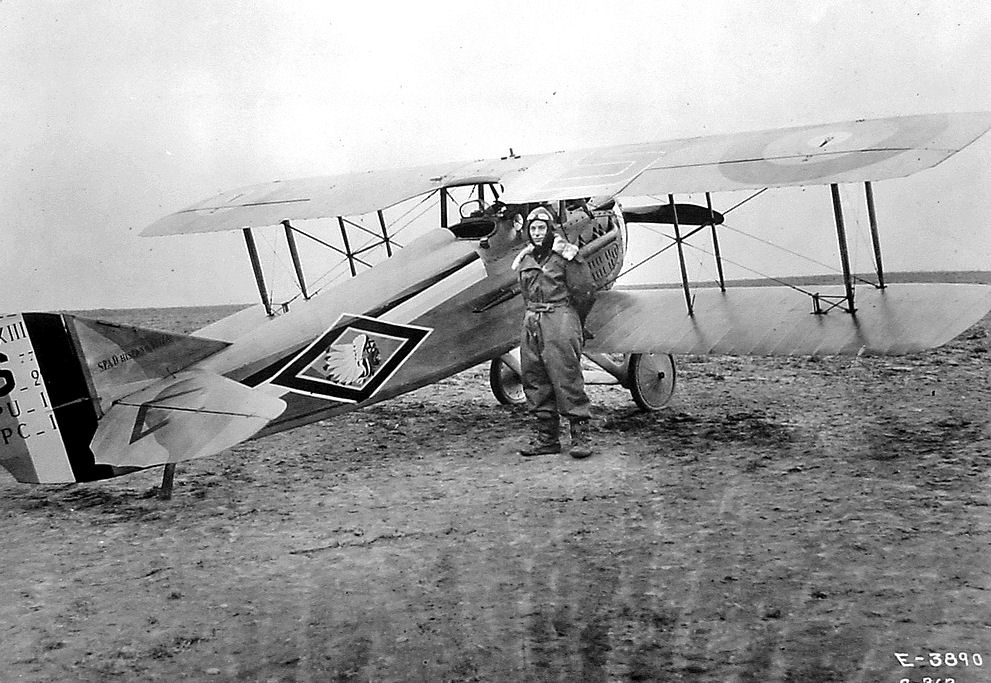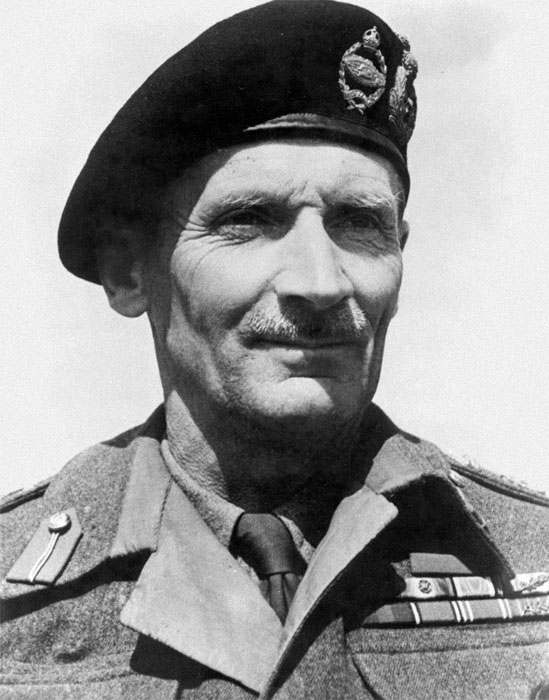|
André Robert Lévy
Sergent André Robert Lévy was a French World War I flying ace credited with six aerial victories.''SPAD XII/XIII Aces of World War I'', p. 27.The Aerodrome websitRetrieved on 5 May 2010. Early life André Robert Lévy was born in Paris, France, on 6 June 1893. He was mobilized for infantry duty at the start of World War I, on 2 September 1914.''Over The Front: The Complete Record of the Fighter Aces and Units of the United States and French Air Services, 1914-1918 '', pp. 185–186. Military service André Robert Lévy transferred to aviation on 8 October 1916. He qualified as a pilot on 4 March 1917. He was initially assigned to fly a Farman for ''Escadrille 29''. However, he flew a Sopwith Aviation Company Sopwi 1.A2 for his first victory on 7 April 1917. On 16 May, he was then reassigned, to the only French air squadron on the Italian Front, ''Escadrille 561'', which was tasked with air defense of Venice. Using a mixture of Nieuport and Spad fighters emblazoned wi ... [...More Info...] [...Related Items...] OR: [Wikipedia] [Google] [Baidu] |
Légion D'honneur
The National Order of the Legion of Honour (french: Ordre national de la Légion d'honneur), formerly the Royal Order of the Legion of Honour ('), is the highest French order of merit, both military and civil. Established in 1802 by Napoleon Bonaparte, it has been retained (with occasional slight alterations) by all later French governments and regimes. The order's motto is ' ("Honour and Fatherland"); its seat is the Palais de la Légion d'Honneur next to the Musée d'Orsay, on the left bank of the Seine in Paris. The order is divided into five degrees of increasing distinction: ' (Knight), ' (Officer), ' (Commander), ' (Grand Officer) and ' (Grand Cross). History Consulate During the French Revolution, all of the French orders of chivalry were abolished and replaced with Weapons of Honour. It was the wish of Napoleon Bonaparte, the First Consul, to create a reward to commend civilians and soldiers. From this wish was instituted a , a body of men that was not an order of ... [...More Info...] [...Related Items...] OR: [Wikipedia] [Google] [Baidu] |
Nieuport
Nieuport, later Nieuport-Delage, was a French aeroplane company that primarily built racing aircraft before World War I and fighter aircraft during World War I and between the wars. History Beginnings Originally formed as Nieuport-Duplex in 1902 for the manufacture of engine components the company was reformed in 1909 as the Société Générale d'Aéro-locomotion, and its products were marketed to the aviation industry, including ignition components. During this time they built their first aircraft, a small single-seat pod and boom monoplane. This was destroyed shortly after having been flown successfully, during the Great Flood of Paris in 1909 . A second design flew before the end of 1909 and had the essential form of modern aircraft, including an enclosed fuselage with the pilot protected from the slipstream and a horizontal tail whose aerodynamic force acted downwards, balancing the weight of the engine ahead of the centre of gravity, as opposed to upwards as on contemp ... [...More Info...] [...Related Items...] OR: [Wikipedia] [Google] [Baidu] |
1893 Births
Events January–March * January 2 – Webb C. Ball introduces railroad chronometers, which become the general railroad timepiece standards in North America. * Mark Twain started writing Puddn'head Wilson. * January 6 – The Washington National Cathedral is chartered by Congress; the charter is signed by President Benjamin Harrison. * January 13 ** The Independent Labour Party of the United Kingdom has its first meeting. ** U.S. Marines from the ''USS Boston'' land in Honolulu, Hawaii, to prevent the queen from abrogating the Bayonet Constitution. * January 15 – The ''Telefon Hírmondó'' service starts with around 60 subscribers, in Budapest. * January 17 – Overthrow of the Kingdom of Hawaii: Lorrin A. Thurston and the Citizen's Committee of Public Safety in Hawaii, with the intervention of the United States Marine Corps, overthrow the government of Queen Liliuokalani. * January 21 ** The Cherry Sisters first perform in Marion, Iowa. ** The T ... [...More Info...] [...Related Items...] OR: [Wikipedia] [Google] [Baidu] |
Spad XIII
The SPAD S.XIII is a French biplane fighter aircraft of the First World War, developed by ''Société Pour L'Aviation et ses Dérivés'' (SPAD) from the earlier and highly successful SPAD S.VII. During early 1917, the French designer Louis Béchereau, spurred by the approaching obsolescence of the S.VII, decided to develop two new fighter aircraft, the S.XII and the S.XIII, both using a powerful new geared version of the successful Hispano-Suiza 8A engine. The cannon armament of the S.XII was unpopular with most pilots, but the S.XIII proved to be one of the most capable fighters of the war, as well as one of the most-produced, with 8,472 built and orders for around 10,000 more cancelled at the Armistice.Sharpe 2000, p. 272. By the end of the First World War, the S.XIII had equipped virtually every fighter squadron of the ''Aéronautique Militaire''. In addition, the United States Army Air Service also procured the type in bulk during the conflict, and some replaced or supplem ... [...More Info...] [...Related Items...] OR: [Wikipedia] [Google] [Baidu] |
Observation Balloon
An observation balloon is a type of balloon that is employed as an aerial platform for intelligence gathering and artillery spotting. Use of observation balloons began during the French Revolutionary Wars, reaching their zenith during World War I, and they continue in limited use today. Synonyms include espionage balloon, reconnaissance balloon, or surveillance balloon. Historically, observation balloons were filled with hydrogen. The balloons were fabric envelopes filled with hydrogen gas, whose flammable nature led to the destruction of hundreds of balloons on both sides. Observers manning these observation balloons frequently had to use a parachute to evacuate their balloon when it came under attack. To avoid the potentially flammable consequences of hydrogen, observation balloons after World War I were often filled with non-flammable helium. Typically, balloons were tethered to a steel cable attached to a winch that reeled the gasbag to its desired height (usually 1,000-1,5 ... [...More Info...] [...Related Items...] OR: [Wikipedia] [Google] [Baidu] |
Austro-Hungarian
Austria-Hungary, often referred to as the Austro-Hungarian Empire,, the Dual Monarchy, or Austria, was a constitutional monarchy and great power in Central Europe between 1867 and 1918. It was formed with the Austro-Hungarian Compromise of 1867 in the aftermath of the Austro-Prussian War and was dissolved shortly after its defeat in the First World War. Austria-Hungary was ruled by the House of Habsburg and constituted the last phase in the constitutional evolution of the Habsburg monarchy. It was a multinational state and one of Europe's major powers at the time. Austria-Hungary was geographically the second-largest country in Europe after the Russian Empire, at and the third-most populous (after Russia and the German Empire). The Empire built up the fourth-largest machine building industry in the world, after the United States, Germany and the United Kingdom. Austria-Hungary also became the world's third-largest manufacturer and exporter of electric home appliances, el ... [...More Info...] [...Related Items...] OR: [Wikipedia] [Google] [Baidu] |
Balloon Buster
Balloon busters were military pilots known for destroying enemy observation balloons. These pilots were noted for their fearlessness, as balloons were stationary targets able to receive heavy defenses, from the ground and the air. Seventy-seven flying aces in World War I were each credited with destroying five or more balloons, and thus were balloon aces. The crucial role of observation balloons An observation balloon was both a vulnerable and a valuable target: the balloon was moored in a stationary position and was lifted by flammable hydrogen gas, whose use was necessitated by the scarcity of helium reserves among European powers. The artillery observer, suspended in the wicker basket beneath, typically had a wireless transmitter, binoculars and/or a long-range camera. His job was to observe actions on the front-line and behind it, to spot enemy troop movements or unusual activity of any sort, and to call down artillery fire onto any worthwhile targets. Balloon observers we ... [...More Info...] [...Related Items...] OR: [Wikipedia] [Google] [Baidu] |
Société Pour L'Aviation Et Ses Dérivés
Lactalis is a French multinational dairy products corporation, owned by the Besnier family and based in Laval, Mayenne, France. The company's former name was Besnier SA. Lactalis is the largest dairy products group in the world, and is the second largest food products group in France, behind Danone. It owns brands such as Parmalat, Président, Siggi's Dairy, Skånemejerier, Rachel's Organic, and Stonyfield Farm. History André Besnier started a small cheesemaking company in 1933 and launched its ''Président'' brand of Camembert in 1968. In 1990, it acquired Group Bridel (2,300 employees, 10 factories, fourth-largest French dairy group) with a presence in 60 countries. In 1992, it acquired United States cheese company Sorrento. In 1999, ''la société Besnier'' became ''le groupe Lactalis'' owned by Belgian holding company BSA International SA. In 2006, they bought Italian group Galbani, and in 2008, bought Swiss cheesemaker Baer. They bought Italian group Parmalat in a 2011 ... [...More Info...] [...Related Items...] OR: [Wikipedia] [Google] [Baidu] |
Venice
Venice ( ; it, Venezia ; vec, Venesia or ) is a city in northeastern Italy and the capital of the Veneto Regions of Italy, region. It is built on a group of 118 small islands that are separated by canals and linked by over 400 bridges. The islands are in the shallow Venetian Lagoon, an enclosed bay lying between the mouths of the Po River, Po and the Piave River, Piave rivers (more exactly between the Brenta (river), Brenta and the Sile (river), Sile). In 2020, around 258,685 people resided in greater Venice or the ''Comune di Venezia'', of whom around 55,000 live in the historical island city of Venice (''centro storico'') and the rest on the mainland (''terraferma''). Together with the cities of Padua, Italy, Padua and Treviso, Italy, Treviso, Venice is included in the Padua-Treviso-Venice Metropolitan Area (PATREVE), which is considered a statistical metropolitan area, with a total population of 2.6 million. The name is derived from the ancient Adri ... [...More Info...] [...Related Items...] OR: [Wikipedia] [Google] [Baidu] |
Médaille Militaire
The ''Médaille militaire'' ( en, Military Medal) is a military decoration of the French Republic for other ranks for meritorious service and acts of bravery in action against an enemy force. It is the third highest award of the French Republic, after the Légion d'honneur, a civil and military order, and the ordre de la Libération, a Second World War-only order. The ''Médaille militaire'' is therefore the most senior entirely military active French decoration. During World War I, 230,000 ''médailles'' were awarded, when 1,400,000 French Army soldiers were killed and 3,000,000 wounded. For comparison, the UK |
Italian Campaign (World War I)
The Italian front or Alpine front ( it, Fronte alpino, "Alpine front"; in german: Gebirgskrieg, "Mountain war") involved a series of battles at the border between Austria-Hungary and Italy, fought between 1915 and 1918 in the course of World War I. Following secret promises made by the Allies in the 1915 Treaty of London, Italy entered the war aiming to annex the Austrian Littoral, northern Dalmatia, and the territories of present-day Trentino and South Tyrol. Although Italy had hoped to gain the territories with a surprise offensive, the front soon bogged down into trench warfare, similar to that on the Western Front in France, but at high altitudes and with very cold winters. Fighting along the front displaced much of the local population, and several thousand civilians died from malnutrition and illness in Italian and Austro-Hungarian refugee-camps. The Allied victory at Vittorio Veneto, the disintegration of the Habsburg empire, and the Italian capture of Trento and Trie ... [...More Info...] [...Related Items...] OR: [Wikipedia] [Google] [Baidu] |
.jpg)





.jpg)

